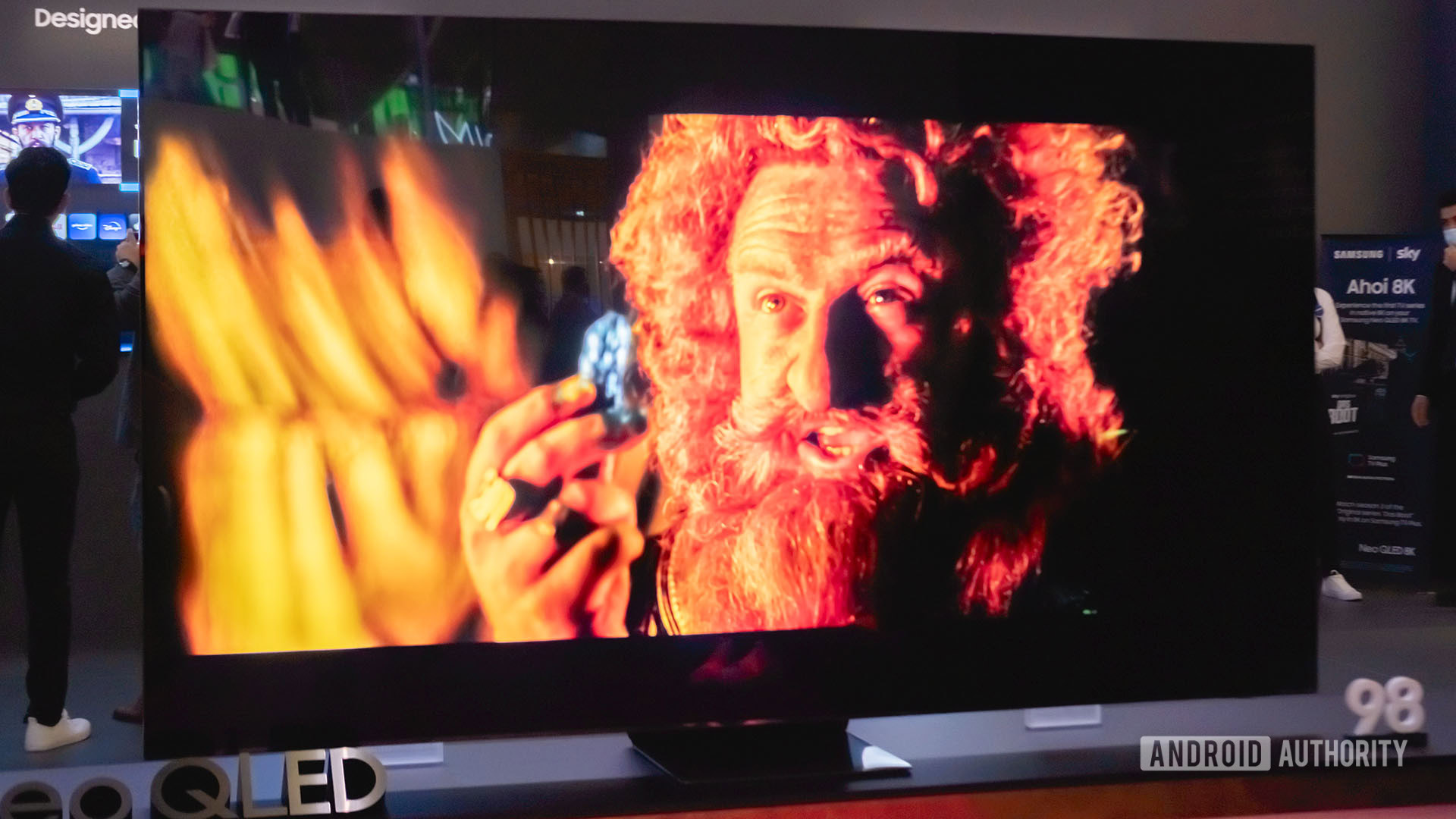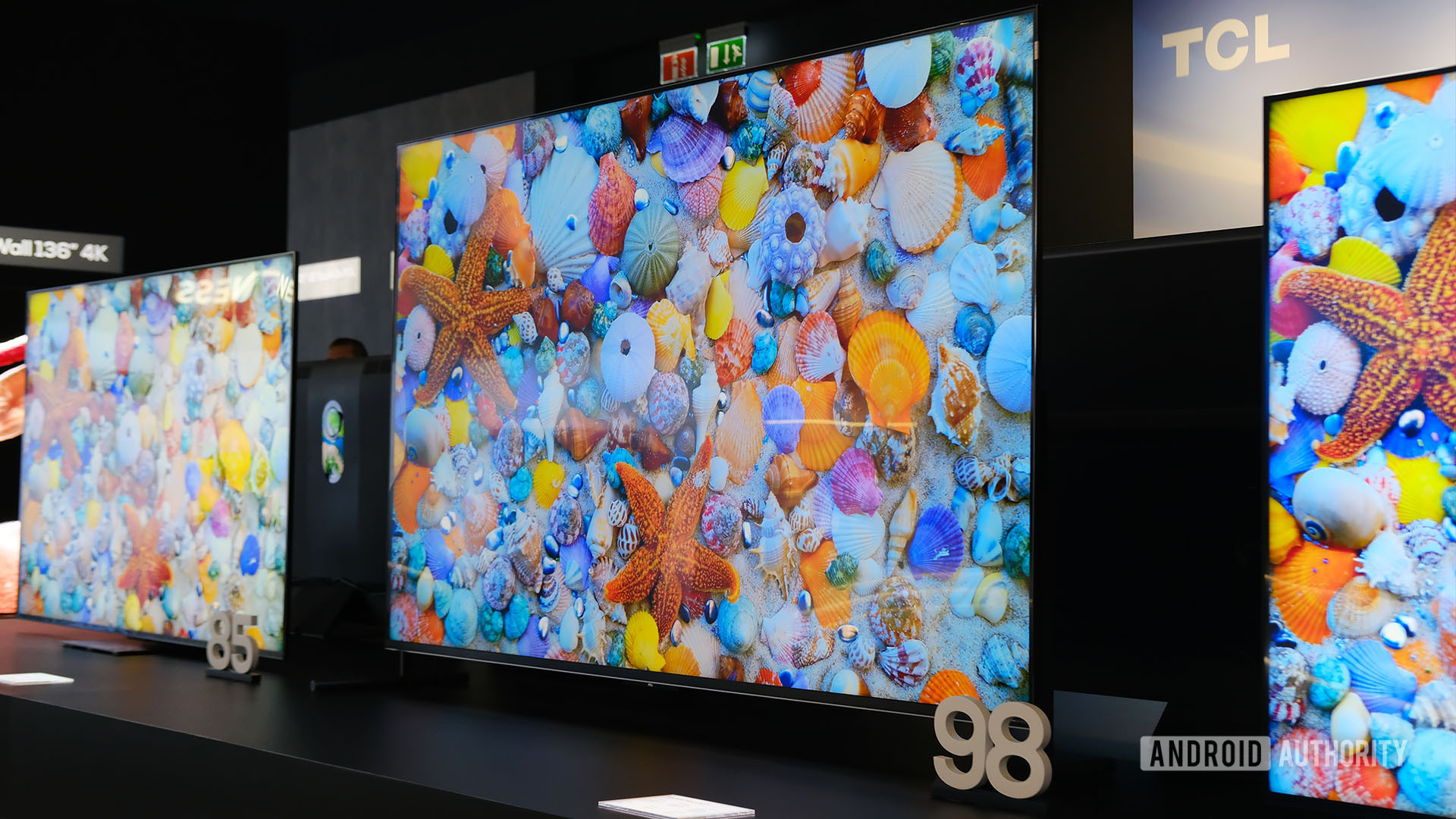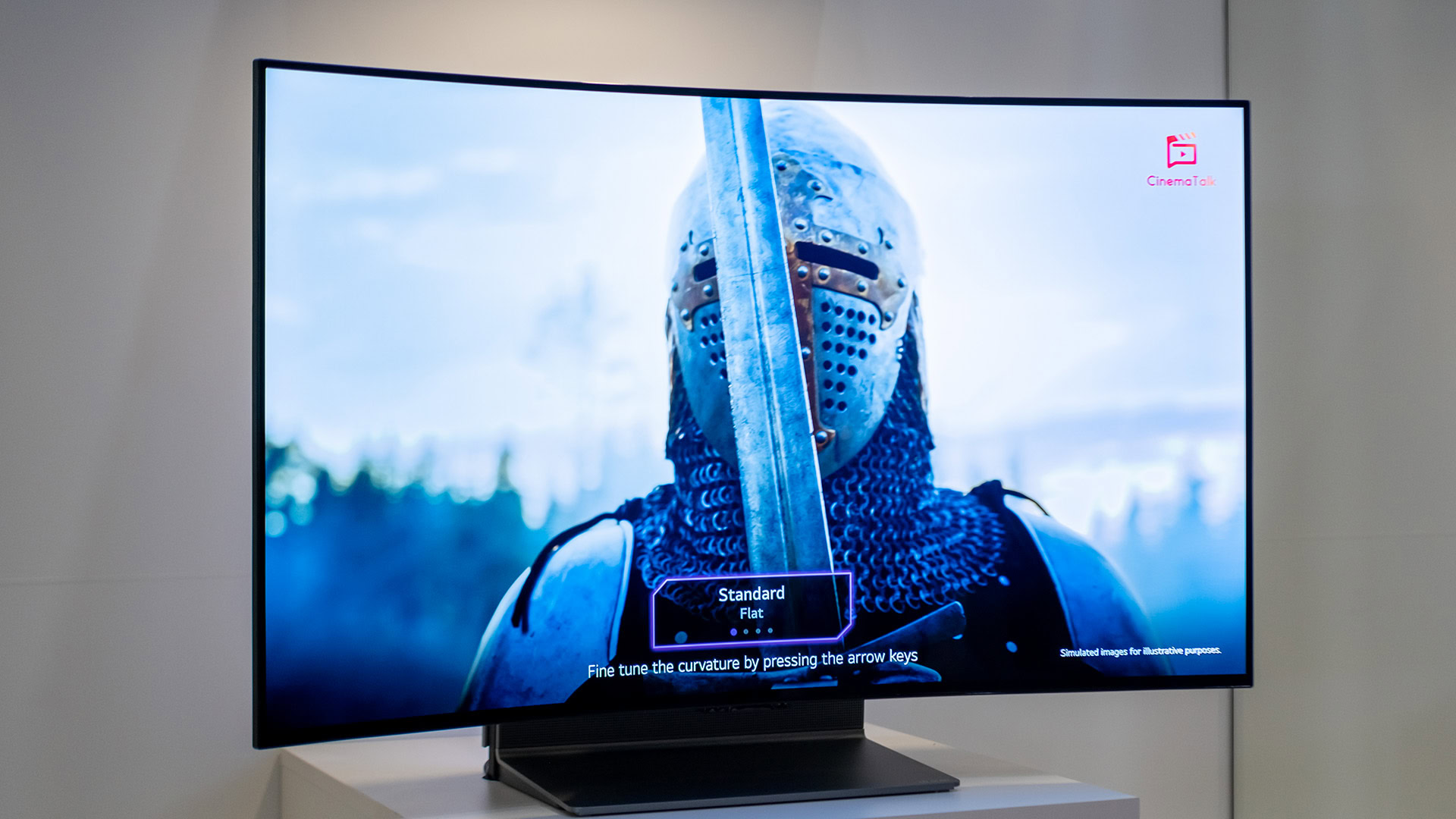Affiliate links on Android Authority may earn us a commission. Learn more.
Everyone's a winner in IFA's race for the biggest TV

Trudging the halls at IFA 2022 has left me with two key takeaways: I look forward to my next home appliance failing when the Wi-Fi drops, and I’m going to need a bigger living room for my next TV. There’s an arm’s race of sorts taking place between LG, TCL, and Samsung to expand their cutting-edge display technologies into the biggest TV they can possibly brag about. Few have breached the 100-inch mark yet, an achievement they’ll no doubt pop the champagne to next year, but with multiple 97-inch and 98-inch flagship models on show, you’re not short of options for that gargantuan home cinema.
Samsung’s 98-inch Neo QLED was the first model I came across, boasting a 4K resolution, a colossal 5,000 nits of peak brightness, and Neo Quantum Processor Plus processor with multi-view support. It’s obviously impressively humungous. Although it’s not quite as big as Samsung’s microLED-based The Wall, it’s a more “mainstream” quantum dot LCD panel that will cost several thousand rather than tens of thousands of dollars when it finally arrives in the US and Europe.
Giant mini-LED TVs are the competitive choice in the face of expensive OLED and micro-LED panels.
Until Samsung’s emissive microLED technology really comes down in price, the brand’s QLED and local-dimming version Neo QLED (aka mini-LED), with the better HDR and deeper blacks, are still the go-to recommendations for high-end TVs that won’t require you to remortgage your house.

TCL kicked off its IFA announcements with the “world’s largest” mini-LED TV — the 98-inch 4K C935 behemoth, with 1,920 local dimming zones, 144Hz variable refresh rate, and Google TV onboard. Although “world’s largest” might be a bit generous, given that it’s also a QLED-based panel with local dimming, just like Samsung’s equally large 98-inch model. Such is the reliance on marketing language to keep announcing “firsts” for these huge, semi-affordable TVs — they’re often based on very similar underlying technologies.
Read more: OLED vs LCD vs FALD TVs — What are they and which is best?
LG’s 97-inch OLED is the exception to this rule but also the “smallest” and most expensive of the bunch. Based on OLED, this is a humongous TV with the added contrast, local black level, and improved viewing angles that the technology offers over LCD-based QLED. You will have to pay for the privilege though, as it’s expected to cost a grand or two more than the existing £6500 LG G2.
While impressive to gawk at on a showroom floor, TVs of this size are impractical for all but the wealthiest customers. Still, it goes to show those high-end display technologies that were bleeding edge just a few short years ago are now well and truly mature.
Mini-LED and OLED may have matured, but LG's flexible TV shows that innovation is alive and well.
There are two quite impressive takeaways here. The first is that big OLED is here to stay; the traditional size advantage of QLED has disappeared (bar that one-inch bragging right) in just a few short years. Secondly, mini-LED panels continue to close the gap on OLED. With more local dimming points and better peak brightness, mini-LED is virtually just as good, for less than half the price of the best OLED TVs.

Still, perhaps the most eye-catching panel we’ve seen at the show is the LG OLED Flex (pictured above). It might only be a puny 42-inches across, but offers the best of both worlds with the option for a traditional flat viewing cinema experience or 20 different degrees of curvature for a more immersive gaming experience. It’s a genuinely innovative take that blends the best of LG’s OLED TV with the curvy trend in larger gaming monitors. Unfortunately, just like most OLED products, it certainly won’t come cheap when it finally arrives on store shelves later this year.